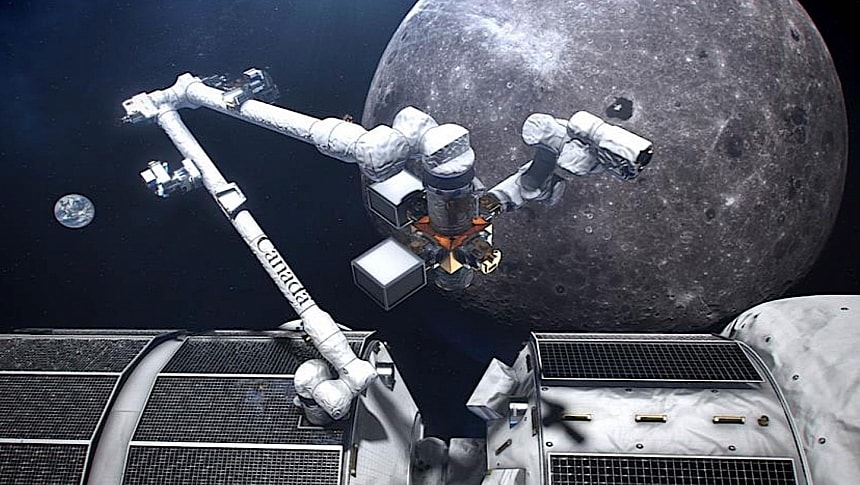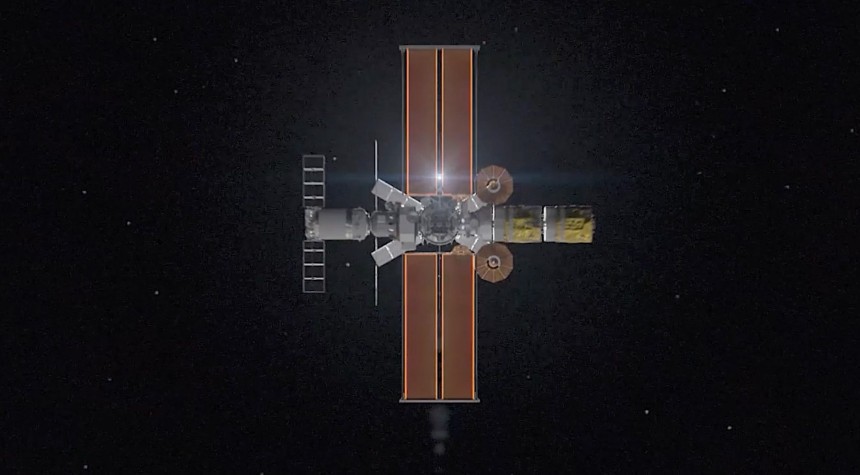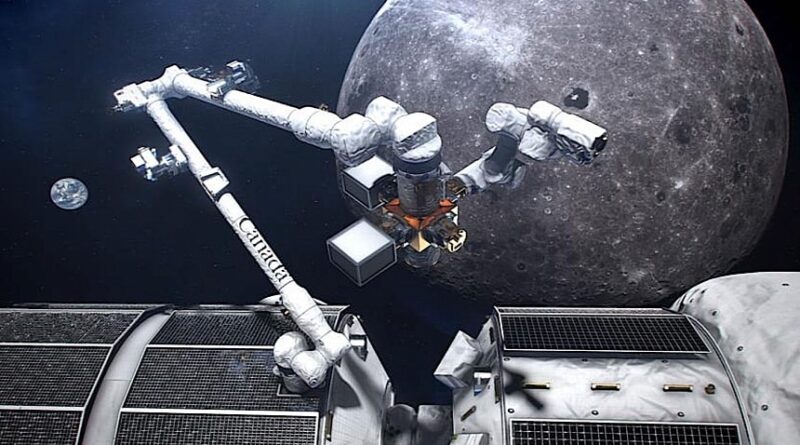The Moon Space Station’s Robotic Arm Is Canadian, Because Canucks Know How to Make Them

Image: Canadarm3 rendering
Perhaps not as visible as its American counterpart, the Canadian Space Agency (CSA) has contributed significantly over the decades to human space exploration programs. The organization has established itself as one of the most reliable (and largest) suppliers of space robotics equipment, and will continue to do the same for future international exploration efforts. solar system. Starting with something called Canadarm3.
The name Canadarm may ring a bell or two because it is not the first time it has been used. The first time this term appeared was during the days when the Space Shuttle was in operation: it supported the aircraft during 90 flights from 1981 to 2011.
The Canadarm (aka Shuttle Remote Manipulator System / SRMS) was basically a robotic arm with the dexterity of a human hand, attached to the Space Shuttle. It was used to unload whatever the orbiter was carrying to its launch pad, capture satellites for repair, and support astronauts during their space missions, among other things. other.
The equipment did all that by using rotatable joints in the shoulder, elbow and wrist. It could lift 586,000 pounds (266,000 kilograms) of cargo in microgravity, controlled remotely by nearby astronauts.
When the Space Shuttle retired in 2011, the Canadarm endured, but the idea endured. It is currently operating on the International Space Station (ISS) as Canadarm2.
The device is 56 feet (17 meters) long and is used for maintenance, transport of supplies and equipment, to assist people during space travel, and to hold spacecraft that will place them in the station.

Photo: NASA/Bradley Reynolds/Alberto Bertolin
This system has something called a “latching end effector”, a device that allows it to hold onto whatever it’s holding. It can be sent around the station by its crew in space or on Earth, and can even travel to the end.
When the space station crashes into Earth’s atmosphere in the 2030s, so will Canadarm2, but once again, Canada’s space robotics legacy will endure. That’s because another type of robotic arm, something called the Canadarm3, is in the works.
Next year NASA and a long list of domestic and international partners will begin sending into lunar orbit the first components of the Gateway space station. It will be the first manned station to date, the first placed in orbit on another planet, and a stepping stone to our own colony on the Moon and later on Mars.
Canadarm3 builds on the legacy of previous robotics equipment and will be the largest piece of Canadian equipment at Gateway. It will also be the most advanced version to date, based on state-of-the-art software to perform actions never thought possible.
The software will allow the arm to perform autonomous operations without human intervention, but remote control from the station itself or from the ground will also be possible if necessary.
The spacecraft will serve as a maintenance and repair tool for the station, will be able to rotate the modules that make up the Gateway, and will hold incoming spacecraft to protect them from the station. Helping astronauts during their extra-orbital journeys is also on the menu.

Photo: NASA/Bradley Reynolds/Alberto Bertolin
The spacecraft is smaller than the one used on the ISS, only 29 feet (8.5 meters) long. Actually there will be two arms, and the smaller one is attached to the larger Canadarm3. The smaller version will have the equipment it needs to move goods in and out of the station, but it will also be able to prepare the larger one if there is a need for such a thing.
The gateway itself will have interfaces that will allow Canadarm3 to protect itself in any situation, to get immediate access to power, data, and video communications.
Canadarm3 is being joined by Ontario-based MDA Space, the company that also lent a hand in designing the lunar probe for the Artemis program, along with Lunar Outpost, Lockheed Martin, General Motors and Goodyear. MDA is the name behind previous versions of the robotic arm as well.
The plan is to have the arm ready to be sent to the Gateway before 2029. The station is scheduled to go online a year earlier, which means that for a while astronomers will have to do without the device this.
CSA is not in this area just for the glory. In exchange for its contribution to Gateway, Canada will send its first citizen on a mission to the Moon, with astronaut Jeremy Hansen slated to be part of the Artemis II mission scheduled to begin next year. . It’s possible that more Canucks will join the program for later missions, and maybe we’ll even have a foot or two on the Moon again.
#Moon #Space #Stations #Robotic #Arm #Canadian #Canucks
